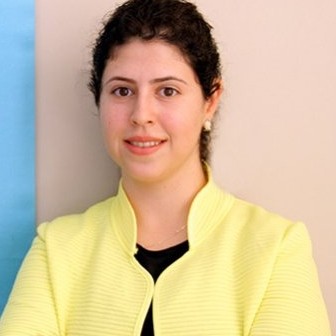Research Article
Aim & Scope
Journal of Exercise Therapy and rehabilitation (JETR) aims to contribute the fields of physiotherapy and rehabilitation, sports and exercise, and other health disciplines including audiology, speech therapy, occupational therapy as well as exercise physiology, nutrition, and child development at national and international level by transforming the studies and researches into scientific publications.
Journal of Exercise Therapy and rehabilitation (JETR) publishes research and review articles together with case studies in the fields of physiotherapy and rehabilitation, sports and exercise, and other health disciplines including audiology, speech therapy, occupational therapy as well as exercise physiology, nutrition, and child development in English and Turkish.
Journal of Exercise Therapy and rehabilitation (JETR) is published three times yearly, in April, August, and December. Articles published in the Journal of Exercise Therapy and Rehabilitation (JETR) are freely available.
Journal of Exercise Therapy and rehabilitation (JETR) also publishes editorials, a letter to the editor section, abstracts from international and national congresses, panel meetings, conference, and symposia, and can function as an open discussion forum on significant issues of current interests.
Author Guidelines
JETR accepts both Turkish- and
English-language manuscripts (original research papers, review articles (by
invitation only), case reports, letters to the editor, and research letters) in
the field of exercise and rehabilitation.
Language editing for Turkish-language manuscripts should be made in accordance
with Güncel Türkçe Sözlük (Contemporary Turkish Dictionary), published by Türk
Dil Kurumu (http://www.tdk.gov.tr/index.php?option=com_gts). Manuscripts that
are written in English should be reviewed by a colleague or a professional, who
is fluent in English.
Note
All authors (corresponding author and co-authors) of the articles submitted to the journal must obtain an individual ORCID number from http://orcid.org and indicate this number on the title page of the article.
When submitting the manuscript, information for all authors should be added on the manuscript submission system (Dergipark).
Ethical Responsibilities of Authors
JETR will consider manuscripts prepared according to the guidelines adopted by the International Committee of Medical Journal Editors, ICMJE ("Uniform requirements for manuscripts submitted to biomedical journals", available as a PDF from http://www.icmje.org) and Committee on Publication Ethics, COPE (https://publicationethics.org/). Authors are advised to read these guidelines.
Manuscript
Manuscripts should be prepared in “Microsoft Word” format and numbered in 12-point “Times New Roman” font, and double-spaced with 2.5-cm margins on both left- and right-margins.
The title of each section should be
printed on top of the relevant page in the following order: “Title Page”,
“Abstract in Turkish and English language”, “Text”, “References”, “Tables”, and
“Figures”.
For original research papers, ethics committee approval must be obtained and
its approval date and number must be stated within the manuscript.
When submitting your paper, use the name-surname of the corresponding author as the file-name.
Title Page
The title of the manuscript should reflect the topic/content of the study. Turkish and English titles should be given separately Acronyms should not be used in the title.
ORCID (Open Researcher and Contributor ID) for all authors, and the number of words in the summary and text (excluding abstract, tables, references) should be added to this page.
Each author’s full name, title, place of work (clinic, department, institute, hospital or university) with street address and e-mail address should be provided. Name(s) of the authors should be associated with the list of place(s) of work using superscript number(s) after each author and the corresponding number before the work of place.
Current street address, e-mail address, phone number(s) (both landline and mobile) of the corresponding author should be given here. If the study was already presented in any conference or its abstract was published elsewhere, it should be stated on the cover page. Names of funding organizations, if any, are also given in this section. All institution names should be indicated in English.
As in the following example, all authors’ contributions to the article (eg, concept / idea development, study design, project management, data collection / processing, data analysis / interpretation, literature search, providing subjects, providing of facilities / equipment, writing, critical review, other) should be specified separately on this page.
Eg: Buket Sarıoğlu: study design, writing
Ahmet Keskin: providing subjects, literature search, writing…
If human subject or animals were used, state the name of Institutional Review Board or Research Ethics Committee (State as well as in the Methods).
Abstract
Abstract should be provided in both Turkish and English. English-language abstract of the manuscript should have the English-language title. Abstracts should be less than 250 words each. Turkish abstract should include: “Amaç”, “Yöntem”, “Bulgular” and “Tartışma” headings, and English abstract should include: “Purpose”, “Methods”, “Results” and “Conclusion” headings. Case report abstracts should be submitted as a single paragraph with no headings. Acronyms should not be used in Abstracts, unless required. At least 3 and at most 5 key words should be provided. Key words should be in conformity with MeSH (Medical Subject Headings, http://www.nlm.nih.gov/mesh/MBrowser.html). Turkish and English abstracts and key words should correspond to each other.
Text
Text should include the following sections: “Introduction”, “Methods”, “Results”, and “Discussion”.
Excessive use of acronyms should be avoided. All acronyms must be spelled out at first mention with its acronym in parenthesis. All acronyms defined in Abstract must be spelled out again in the text with their acronyms in parenthesis. Acronyms must be uniformed throughout the text.
Introduction
Literature review regarding the subject of the study as well as its aim should be provided.
Methods
The research method used in the study should be presented as brief clear definitions with proper citations. Statistical analysis must be included in this section under a separate subheading.
Results
Results of the study should be presented in this section without comment. Data should be presented clearly, preferably via tables and/or figures. Excessive use of tables should be avoided.
Discussion
Main conclusions of the study should be presented and discussed in relation with recent literature. The literature cited in this section should directly be related with the findings of the study. Statistical findings presented in the Results section should not be repeated here. Limitations of the study must be presented under a separate subheading, named “Limitations” in this section.
Conclusion
This section should present, in a single paragraph, the clinical message of the study and/or contributions of the findings to the field.
Acknowledgment
Funding organizations and/or individuals who provided help for the study should be given here. This section should be brief.
Copyright Release and Conflict of Interest Forms
Both Copyright Release and Conflict of Interest Forms (both of which can be downloaded from “submit a manuscript” section of www.jetr.org.tr website) must be signed and submitted as a JPEG file.
References
When it is desired to cite the name of the author in the text, the surname of the first author should be used together with the abbreviation "et al." For example, "Orhan et al. showed that this treatment technique was effective." References must be numbered in order of their first appearance in the text. Citations must be identified by superscripted Arabic numbers at the end of the sentence, following the period, e.g., lorem ipsum.16. Do not provide separate numbers for citations that appear together, e.g., use 15-18, instead of 15,16,17,18. Comma must be used between citation numbers without any space before and after. Do not include personal communications and unpublished data as references. Books are to be used as references only if deemed required, in which case its use as reference should be limited to 2-3 books per manuscript. All authors should be included in reference list unless there are 3 or more, in which case only the first 3 should be given, followed by “et al.”. Journal titles should be abbreviated according to Index Medicus (http://library.caltech.edu/reference/abbreviations/). Abbreviated title of our journal is “J Exerc Ther Rehabil”.
The number of references should not exceed 40 for original research, 15 for case reports and 100 for review articles.
Reference list should follow the conventions of the “Vancouver” reference style.
Author(s) name(s), Article title, Journal name (abbreviated according to Index Medicus), The year of printing, Journal volume number (do not give issue number), Page range (Ex: 10-15)Examples of reference writings are as follows:
Standard Article – Articles by authorsMueller MJ, Tuttle LJ, Lemaster JW, et al. Weight-bearing versus nonweight-bearing exercise for persons with diabetes and peripheral neuropathy: a randomized controlled trial. Arch Phys Med Rehabil. 2013;94:829-838.
Journal Supplement:
Arndt J, Clavert P, Mielcarek P, et al. Immediate passive motion versus immobilization after endoscopic supraspinatus tendon repair: a prospective randomized study. Orthop Traumatol Surg Res. 2012;98:S131-138
Online Journal Article
If a Digital Object
Identifier (DOI) number is assigned for online published articles that are in
print, the DOI number is appended to the end.
Skjerbaek A, Naesby M,
Lützen K, et al. Endurance training is feasible in severely disabled patients
with progressive multiple sclerosis. Mult Scler. 2013;doi:
10.1177/1352458513505351.
Book
Powers SK, Howley ET. Exercise Physiology: Theory and Application to Fitness and Performance. Boston: McGraw-Hill; 2009.
Book Chapter
Dean E, Butcher S. Mobilization and exercise: physiological basis for assessment, evaluation, and training. In: Cardiovascular and Pulmonary Physical Therapy: Evidence to Practice. Frownfelter D, Dean E, eds. 5th ed. St Louis: Elsevier Mosby; 2012:244-292.
Tables-Graphs-Figures-Images
Each table, graph, figure and image should be placed in a separate page after references. Tables should be arranged vertically in the text. Tables should be added in Word from the “Insert Table” button. The Mean and Standard Deviations (X±SD) should be given in the same coulmn. The percentages (n (%)) should be given in the same column. Decimal numbers should be given as 2 digits after the comma. All graphs, figures, and images are to be named as Figure and all tables as Table. All figures and tables must be indicated in the text with a brief title, and each of which should be numbered in the order of appearance. Titles should be typed clearly above the tables and under the figures. All acronyms-abbreviations and statistical methods used in Tables and Figures must be explained underneath. If they are previously published elsewhere, written permission to republish the material must be obtained and submitted with the manuscript. Figures must be submitted as individual JPEG files with a resolution of 600 dpi and a size of 9 x 13 cm. If the anonymity of patients cannot be preserved in photographs, patients’ or their legal representatives’ signed permission must be submitted. Otherwise, their names should not be used and/or their eyes and other identifiable features must be blacked out to preserve anonymity.
Review Articles
Review articles are considered on an invitation-only basis and reviewed by the Editorial Board.
Case Reports
Important and rare clinical experiences are to be submitted. Case reports include the following sections: Introduction, Case Report, and Discussion.
Letters to the Editor
Letters to the Editor should include comments regarding the materials published in the “Journal of Exercise Therapy and Rehabilitation” in the previous 6 months. They should not exceed 1000 words (or 750 words with 1 Table or Figure) and 5 references. Letters to the Editor are reviewed by the Editorial Board. Authors should contact the Editorial Office of JETR at before submitting the letter. If the Letter to the Editor includes a comment regarding a specific published material, it must be submitted within 6 months of the publication date, in which case the Letter may be forwarded to the author(s) of the publication for solicitation of their response.
Research Letters
Research letters include an early report of a research study involving clinically important data and findings. Text has no sections and includes no more than 1000 words, 1 Table or Figure and 10 references. Research Letters are reviewed by the Editorial Board. Authors should contact the Editorial Office of JETR at before submitting the letter.
Ethical Principles and Publication Policy
JETR will consider manuscripts prepared according to the guidelines adopted by the International Committee of Medical Journal Editors, ICMJE (“Uniform requirements for manuscripts submitted to biomedical journals”, available as a PDF from http://www.icmje.org) and Committee on Publication Ethics, COPE (https://publicationethics.org/). Authors are advised to read these guidelines.
Journal of Exercise Therapy and rehabilitation (JETR) publishes research and review articles together with case studies in the fields of physiotherapy and rehabilitation, sports and exercise, and other health disciplines including audiology, speech therapy, occupational therapy as well as exercise physiology, nutrition, and child development in English and Turkish. Journal of Exercise Therapy and rehabilitation (JETR) is published three times yearly, in April, August and December. The average period of article evaluation is three months. There is no publication fee for the article publishing process.
Journal Boards
Editor in Chef
Editors





 Web
Web

Associate Editors

English Editors





 Web
Web
Technical Editor
Associate Technical Editors




Statistical Advisor
Ethical Advisor

Advisory Board








https://avesis.marmara.edu.tr/gpolat
Edibe Ünal Türk fizyoterapist ve akademisyendir. Hacettepe Üniversitesi Fizik Tedavi ve Rehabilitasyon Fakültesi'nde öğretim üyesi ve Romatolojik Rehabilitasyon Ünitesi'nin kurucusudur. Ünitesinde ekibiyle birlikte 20 yılı aşkın süredir romatizmalı hastaların (hem çocuk hem de yetişkin) rehabilitasyonu üzerine çalışmaktadır. “Çocuk ve Erişkin Romatoloji Fizyoterapistleri Derneği ”nin kurucusu ve başkanıdır. Bilişsel Egzersiz Terapisi Yaklaşımı (BETY) adı verilen bir fizyoterapi yöntemi geliştirmiştir. Ayrıca çocuk romatizması (Juvenil Artrit Biyopsikososyal Ölçeği (JAB-Q)) ve erişkin romatizması (BETY-Biyopsikososyal Ölçeği (BETY-BQ)) olan hastalar için iki orijinal anket geliştirmiştir. Romatolojik Rehabilitasyon üzerine birçok makalesi, kitap bölümleri ve kitapları bulunmaktadır.









PROF. DR. MİNTAZE KEREM GÜNEL
Prof. Dr. Mintaze Kerem Günel Ankara’da doğdu. İlk, orta ve lise öğrenimimi Ankara’da tamamladı. 1989 yılında H.Ü. Fizik Tedavi ve Rehabilitasyon Fakültesinden mezun oldu.
2003 yılında Doçent, 2009 yılında ise Profesör unvanını aldı. Halen Hacettepe Üniversitesi Fizik Tedavi ve Rehabilitasyon Fakültesinde öğretim üyesi olarak görevine devam etmekte, Temel Fizyoterapi ve Rehabilitasyon Anabilim Dalı’na bağlı, Serebral Palsi ve Pediatrik Rehabilitasyon Ünitesi sorumlusu olarak akademik ve klinik çalışmalarını sürdürmektedir.
Nörogelişimsel riskli bebeklerin ve özellikle Serebral palsi için yüksek riskli bebeklerin değerlendirilmesi ve Serebral palsi riski taşıyan bebeklerin fizyoterapi uygulamaları, serebral palsili çocuklarda ICF tabanlı, hedefe yönelik akademik çalışmalar yapmaktadır. Fizyoterapi yaklaşımları ve erken müdahale kapsamında erken fizyoterapi rehabilitasyon alanında ICF tabanlı hedefe yönelik terapi algoritmaları oluşturmaları oluşturmaya yönelik çalışmalar ile ilgilenmektedir. Pediatrik fizyoterapi ile ilgili lisans-lisansüstü dersler vermektedir.
Serebral palsili çocuklar ve aileleri için ihtiyaçların belirlenmesi ile ilgili ulusal ve uluslararası projeler yürütmektedir. Avrupa Bobath Merkezi (EBTA) tarafından düzenlenen Serebral Palside Bobath uygulamalarına ilişkin uluslararası kursları bitirmiş ve EBTA Çocuklarda Bobath (Nörogelişimsel Terapi) Kıdemli Eğitmeni unvanını almıştır. Türkiye’de EBTA’ya bağlı açılan Serebral palsi için riski olan bebekler ve Serebral palsili çocuklar ve ergenler için Bobath uygulamalarında sertifikalı eğitim vermektedir.
Uluslararası ve ulusal kitap, kitap bölümleri, uluslararası ve ulusal indekslerde yayınlanmış çok sayıda yayını vardır ve uluslararası ve ulusal dergilerde editör kurulunda yer almaktadır. Uluslararası ve ulusal çok sayıda kongre başkanlığı yapmış, düzenleme, bilimsel kurulunda yer almıştır.
Uzunca yıllar, Avrupa Çocuk Özürleri Akademisi (EACD)‘nin Türkiye temsilciliğini yürütmüştür. Uluslararası çocuk engelliliği akademileri birliği (IAACD) yönetim kurulu üyesidir. Hacettepe Üniversitesi Çocuklarda Habilitasyon Araştırma ve Uygulama (CUHA) Merkezi kurucu müdürüdür ve halen müdürlük görevini yürütmektedir. Türkiye Spastik Çocuklar Vakfı (TSCV) ve Serebral Palsili Çocuklar Derneği (SERÇEV) akademik kurul üyesidir. Bobath Terapistleri Derneği yönetim kurulu başkanıdır. Evli ve iki çocuk annesidir.

Burcu Dilek, Trakya Üniversitesi Sağlık Bilimleri Fakültesi'nde doçent unvanıyla öğretim üyesi olarak görev yapmaktadır. Fizyoterapi alanında uzman olan Dilek, lisans eğitimini 2008 yılında İstanbul Üniversitesi Fiziksel Terapi ve Rehabilitasyon Bölümü’nde tamamlamıştır. Yüksek lisansını ve ilk doktora derecesini 2010 ve 2015 yılları arasında Hacettepe Üniversitesi Sağlık Bilimleri Enstitüsü’nde Protez-Ortez ve Biyomekanik alanında almıştır. İkinci doktora derecesini ise İstanbul Medipol Üniversitesi Sağlık Bilimleri Enstitüsü’nde 2018-2024 yılları arasında Nörobilim alanında gerçekleştirmiştir.
Akademik kariyerinde, Prof. Dr. Yavuz Yakut’un danışmanlığında yüksek lisans ve doktora tezlerini ve Prof. Dr. Lütfü Hanoğlu’un danışmanlığında doktora tezini tamamlamıştır. Araştırmaları nörobilim, protez-ortez, biyomekanik ve fiziksel rehabilitasyon konularında yoğunlaşmaktadır.
Burcu Dilek, TÜBİTAK tarafından desteklenen "Mobil Uygulama ve Sanal Gerçeklik Destekli Modellerin EEG-İlişkili Osilasyonlar Yöntemiyle Değerlendirilmesi" projesinin yürütücüsüdür. Ayrıca Japonya, Hollanda ve Polonya gibi ülkelerdeki prestijli üniversitelerde misafir araştırmacı olarak bulunmuş ve uluslararası iş birliklerine katkıda bulunmuştur.
Başlıca araştırma alanları şu şekildedir: motor imgeleme, beden algısı, kronik ağrı, fantom ağrısı ve EEG.
















